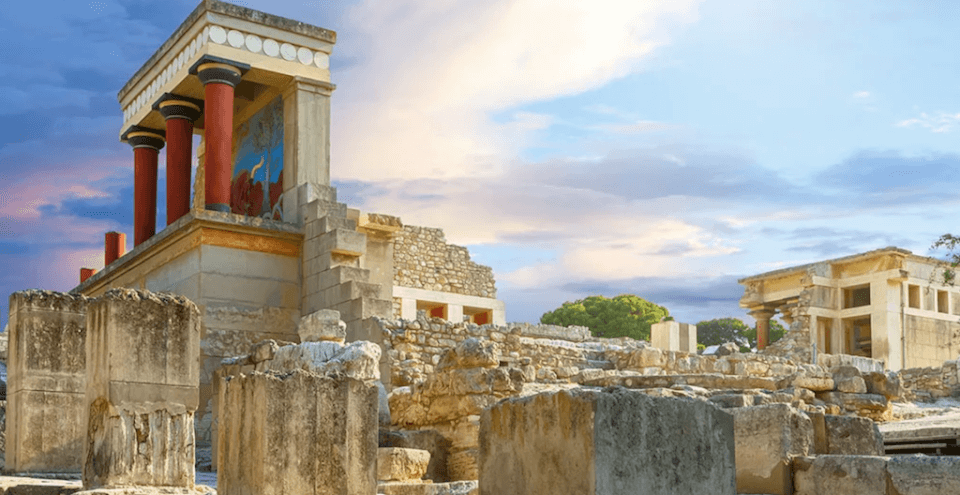The "management" of the Minoan Palaces as world monuments - Article by Eleni Methodiou* |

Source: Efimerida ton Syntakton (Editors' Newspaper), 7.08.2025
The 47th Session of the UNESCO World Heritage Committee (Paris, 6-16 July 2025) approved the inscription of the six Minoan Palatial Centers (Knossos, Phaistos, Zominthos, Zakros, Malia, Kydonia) on the World Heritage List (the recommendation of ICOMOS, an institutional advisor, to return the file due to a lack of required information was not accepted by the committee). The monuments were assigned criteria ii, iii, v, vi, while ICOMOS proposed criteria iii and iv. II states that the monuments mark elements of early urban development with complex socio-political structures, advanced technologies and artistic masterpieces, III emphasizes that they are an important point of reference in the history of humanity in terms of the achievement of early economic systems and the first writing systems in Europe, IV highlights the monumental and peculiar architectural style of the Palaces and VI is connected to the intangible values of the monuments. The myths and traditions associated with the Minoan civilization as well as the artistic achievements have been a timeless source of inspiration for modern artistic creation internationally in all the so-called fine arts. The Committee adopted Recommendations on the protection, restoration and promotion of the monuments to be implemented by the Greek side with appropriate policies and requested information on any intention to undertake or approve major restoration works or development projects that may affect the Outstanding Universal Value of the monuments. The Recommendation raises questions regarding the development of methods for the clear distinction between authentic archaeological remains and later reconstructions carried out at Knossos in the early 20th century in order to ensure that the justification of Outstanding Universal Value is based on authentic material. As is known, Evans attempted a large-scale restoration of the monument mainly from 1925 to 1932 using irreversible methods, such as reinforced concrete and steel beams. These works provoked negative criticism for the use of unsubstantiated archaeological data on which the restoration was based and the failure to distinguish the ancient parts from the interventions. It should be noted that at that time there were no International Conventions and Normative Texts for the restoration of monuments. The Athens Charter was adopted in 1931 and the Venice Charter in 1964, while UNESCO was founded in 1945. This Recommendation refers to article 12 of the Venice Charter according to which new elements in a monument must be distinguished from the original parts. However, in the specific case of Knossos, this rule cannot be applied retrospectively. For this reason, Evans' intervention can be justified as an example of the history of the restoration of monuments in the Mediterranean region at the beginning of the 20th century. This Recommendation also refers to the authenticity of the material. Initially, the guidelines defined that design, materials, technical excellence and compatibility with the surrounding environment constitute the qualities of authenticity. In 1994, the Nara text was adopted, which expanded the qualities of authenticity (use and function, traditions, language and other forms of intangible heritage) based on the importance of cultural diversity. The declaration of monuments means that their state of conservation will be monitored by the international community within the framework of the World Heritage Convention, which currently supports the most comprehensive system of monitoring the management and promotion of monuments and promotes scientific dialogue on the evolution of concepts, methods, and conservation policies. Therefore, it is required that our country adopt a management plan in accordance with the principles of sustainable development and assess the impacts on monuments from climate change and from social, economic and environmental parameters. A management system constitutes a holistic and long-term approach to the protection of cultural heritage. It defines a common framework that includes three categories and nine parameters: basic elements (legal framework, institutional framework, resources), process (planning, implementation, monitoring), results (achievement of objectives, results, improvement of the management system) Greece, as a contracting member state, must also guarantee that it has adequate mechanisms to address the impacts of tourism and tourist activities on monuments. It is considered appropriate to develop educational programs to inform and raise awareness among young people and civil society about the importance of world heritage and to encourage their active participation in the protection of monuments (Article 27.2 of the Convention). Also, the promotion of monuments at a global level as evidence of the enduring influence of Minoan culture on contemporary artistic creation is linked to criterion vi of the declaration.
*Member of the Scientific Committee of the Ionian University UNESCO Chair on Threats to Cultural Heritage, former advisor to MEA UNESCO
Back

